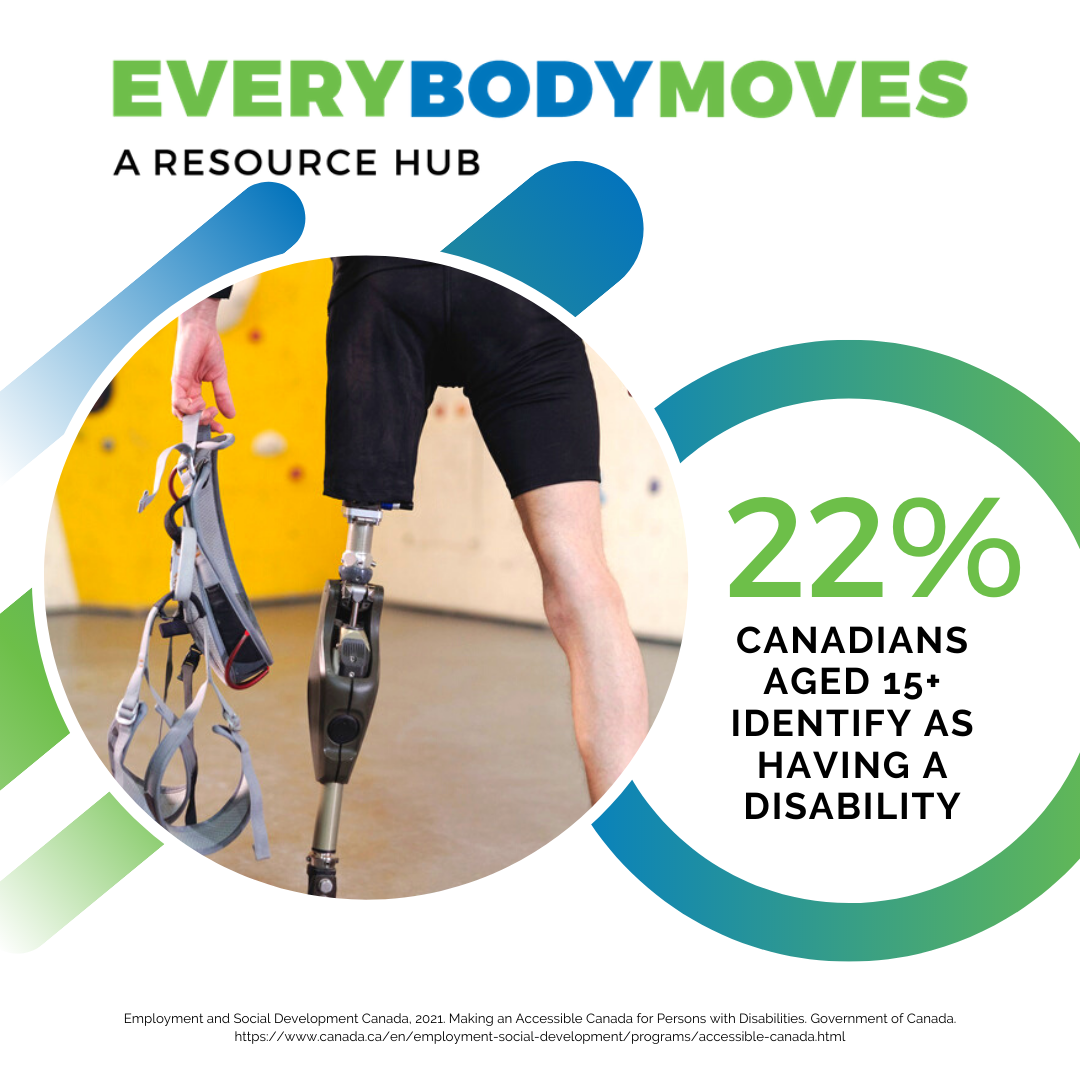
Simran Patel just finished her first meeting at a community Sports Council, and is feeling excited yet perplexed. Although the council is comprised of some very experienced fitness and health professionals, all of its members are non-disabled. She wants to ensure that the physical activity programs can attract people of all abilities. Simran is considering what she might propose to the council to get more people with disabilities involved, but isn’t sure what practical steps to take.
More than 6 million Canadians aged 15 and over identify as having a disability. The World Health Organization determines that most people will experience a disability to varying degrees in their lifetime.
People with disabilities experience stigmatization and discrimination, which affects their opportunities to be physically active.
People living with disability are at least twice as likely to be inactive, compared to people who are non-disabled. For example in Victoria, BC, only 3% of adults with disabilities are moderately physically active, and 53% of youth with a disability experience barriers to leisure activities.
However, there are major benefits for people living with disabilities to being physically active: they gain a greater sense of belonging, become stronger, and more confident. Moreover, physical activity reduces the risk for chronic disease and comorbities, while increasing mental and social well-being.
On a community level, inclusive and accessible sports can positively change the community's perceptions of people living with disabilities by focusing attention on abilities and achievements. Moreover, families feel more supported which can counter the isolation and negative attitudes that people living with disabilities face.
As sport, recreation and community leaders, we have the responsibility and opportunity to continue making physical activity as inclusive and accessible as possible for people of all abilities.
After reading the First Involvement in Sport and Recreation infographic, Simran realized that the community centre they held the council meetings at were not specialized in creating a welcoming, accessible and safe space for people living with disabilities. After informing the Sports Council, they decided to have an open conversation with the community centre facilitators to ensure all staff and volunteers were adequately informed and trained in creating accessible spaces. Simran then asked front-line staff to promote the Sports Council to the community, with an emphasis on valuing and celebrating diverse abilities.

Resources
EverybodyMoves has resources specifically focused on people living with disabilities. Look through the resources below, or check out the hub for even more! If you see a resource missing, submit it here. We want the Hub to house as many resources on inclusive and accessible physical activity as possible!
What To Do When You Meet a Person With a Disability
This infographic is part of a series of posters that create inclusion, raise awareness, promote and educate the public on active living and disabilities. OneAbility and Recreation Integration Victoria have created the 'Disability & Diversity: Education to Promote Active Living' project infographics. These posters are available for you to browse, download, read, distribute and display.
Modifications and Adaptations on Common Games and Activities
Let's Play offers these easy adaptations (for equipment, skills, rules and facilities) to common games and activities familiar to children. You will see how quickly activities you currently use can be made inclusive for everyone.
Disability Tip Sheet
The Active Living Alliance for Canadians with a Disability created a series of Tip Sheets to provide information about disabilities and conditions to help leaders in the physical activity, recreation and sport sectors be inclusive.
